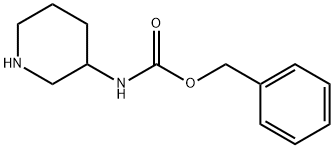DL-Pipecolinic acid
Synonym(s):(±)-Piperidine-2-carboxylic acid;2-Piperidinecarboxylic acid;Homoproline;Pipecolic acid free base
- CAS NO.:535-75-1
- Empirical Formula: C6H11NO2
- Molecular Weight: 129.16
- MDL number: MFCD00064347
- EINECS: 208-616-3
- SAFETY DATA SHEET (SDS)
- Update Date: 2025-07-04 16:04:00

What is DL-Pipecolinic acid?
Chemical properties
white to light beige fine crystalline powder
The Uses of DL-Pipecolinic acid
DL-Pipecolinic acid is used as a diagnostic marker of pyridoxine-dependent epilepsy. It acts as a ligand in copper-catalyzed approach for P-arylation of organophosphorus compounds. It is used as organocatalyst and novel substrate in organic synthesis.
The Uses of DL-Pipecolinic acid
Pipecolic acid is involved in synaptic transmission in the central nervous system.
Definition
ChEBI: A piperidinemonocarboxylic acid in which the carboxy group is located at position C-2.
Properties of DL-Pipecolinic acid
| Melting point: | 282 °C (dec.)(lit.) |
| Boiling point: | 239.22°C (rough estimate) |
| alpha | [α]D20 -1~+1° (c=2.5, H2O) |
| Density | 1.1426 (rough estimate) |
| refractive index | 1.4587 (estimate) |
| storage temp. | Sealed in dry,Room Temperature |
| solubility | Methanol (Slightly), Water (Slightly) |
| pka | 2.28, 10.72(at 25℃) |
| form | Fine Crystalline Powder |
| color | White to light beige |
| Water Solubility | soluble |
| Merck | 14,7458 |
| BRN | 81095 |
| CAS DataBase Reference | 535-75-1(CAS DataBase Reference) |
| EPA Substance Registry System | 2-Piperidinecarboxylic acid (535-75-1) |
Safety information for DL-Pipecolinic acid
| Signal word | Warning |
| Pictogram(s) |
 Exclamation Mark Irritant GHS07 |
| GHS Hazard Statements |
H315:Skin corrosion/irritation H319:Serious eye damage/eye irritation H335:Specific target organ toxicity, single exposure;Respiratory tract irritation |
| Precautionary Statement Codes |
P261:Avoid breathing dust/fume/gas/mist/vapours/spray. P264:Wash hands thoroughly after handling. P264:Wash skin thouroughly after handling. P271:Use only outdoors or in a well-ventilated area. P280:Wear protective gloves/protective clothing/eye protection/face protection. P302+P352:IF ON SKIN: wash with plenty of soap and water. P305+P351+P338:IF IN EYES: Rinse cautiously with water for several minutes. Remove contact lenses, if present and easy to do. Continuerinsing. |
Computed Descriptors for DL-Pipecolinic acid
| InChIKey | HXEACLLIILLPRG-UHFFFAOYSA-N |
New Products
4,4-Difluoropiperidine hydrochloride tert-butyl 9-methoxy-3-azaspiro[5.5]undecane-3-carboxylate Indole Methyl Resin N-Isopropylurea N,N-Dicyclohexylcarbodiimide(DCC) MELDRUMS ACID 5-METHYLISOXAZOLE-4-CARBOXYLIC ACID Magnessium Bis glycinate Zinc ascorbate 1-bromo-2-butyne 2-acetamidophenol 9(10H)-anthracenone Erythrosin B, 4-Piperidinopiperidine 2-((4-morpholinophenylamino) (methylthio) methylene) malononitrile 2,4-dihydroxybenzaldehyde 3-(4-morpholinophenylamino)-5-amino-1H-pyrazole-4-carbonitrile Methyl 2-methylquinoline-6-carboxylate 2,6-dichloro-4-nitropyridine 4-Bromo-2-chlorobenzonitrile 2-(benzylamino)acetic acid hydrochloride 4-(tert-Butoxycarbonylamino)but- 2-ynoic acid 3,4-dihydro-2H-benzo[b][1,4]dioxepine 1-Phenyl-1-cycloprppanecarboxylicacidRelated products of tetrahydrofuran








You may like
-
 DL-Pipecolinic acid 97% CAS 535-75-1View Details
DL-Pipecolinic acid 97% CAS 535-75-1View Details
535-75-1 -
 DL-Pipecolinic acid, 98% CAS 535-75-1View Details
DL-Pipecolinic acid, 98% CAS 535-75-1View Details
535-75-1 -
 DL-Pipecolic Acid CAS 535-75-1View Details
DL-Pipecolic Acid CAS 535-75-1View Details
535-75-1 -
 Pipecolinic acid CAS 535-75-1View Details
Pipecolinic acid CAS 535-75-1View Details
535-75-1 -
 3-(4-amino-1-oxoisoindolin-2-yl)-1-methylpiperidine-2,6-dione 98%View Details
3-(4-amino-1-oxoisoindolin-2-yl)-1-methylpiperidine-2,6-dione 98%View Details -
 20677-73-0 (2,2-diethoxyethyl)methylamine 98%View Details
20677-73-0 (2,2-diethoxyethyl)methylamine 98%View Details
20677-73-0 -
 3-(4-(hydroxyamino)-1-oxoisoindolin-2-yl)piperidine-2,6-dione 98%View Details
3-(4-(hydroxyamino)-1-oxoisoindolin-2-yl)piperidine-2,6-dione 98%View Details -
 57381-49-4 2-bromo-4-chlorobenzonitrile 98%View Details
57381-49-4 2-bromo-4-chlorobenzonitrile 98%View Details
57381-49-4
Statement: All products displayed on this website are only used for non medical purposes such as industrial applications or scientific research, and cannot be used for clinical diagnosis or treatment of humans or animals. They are not medicinal or edible.
